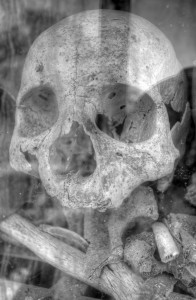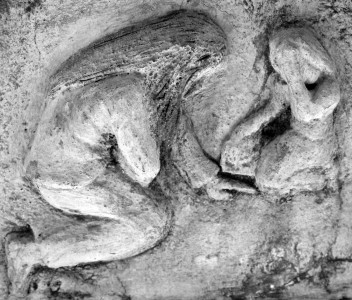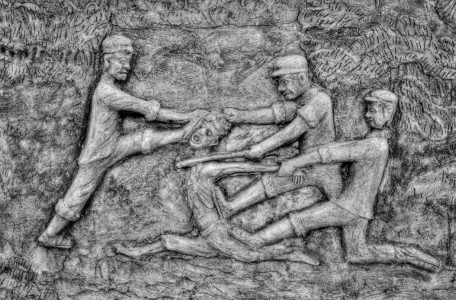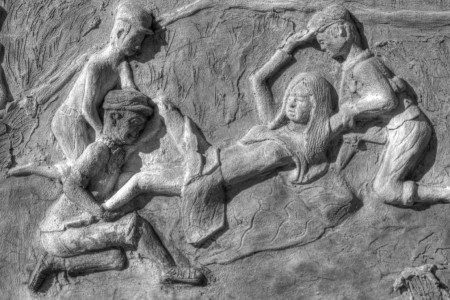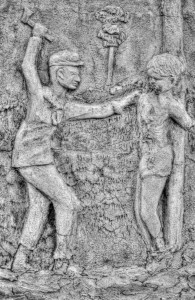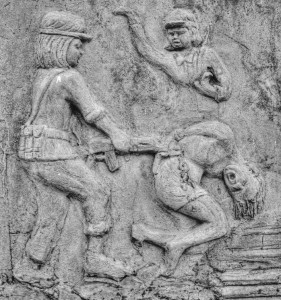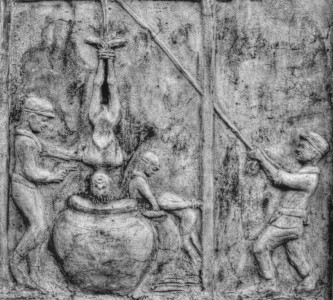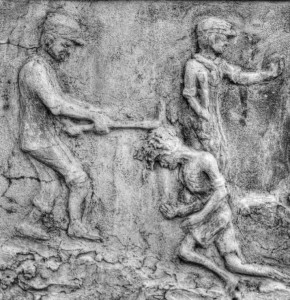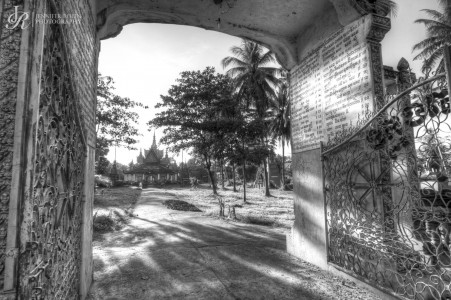 The Buddhist temple complex of Wat Somrong Knong is located just a few kilometers north of Battamabang, and a little east of the Sangkar River.
The Buddhist temple complex of Wat Somrong Knong is located just a few kilometers north of Battamabang, and a little east of the Sangkar River.
Part of the history of the Wat is that it was used by the Khmer Rouge as a prison; a place where people were interrogated, tortured, and executed during the Pol Pot regime. It is Battambang’s version of Phnom Penh’s Tuol Sleng prison.
The figures we have seen indicate that over ten thousand Cambodians were tortured and killed at Wat Somrong Knong.
Today, it is back to being a working Buddhist temple complex, housing a good-sized monk population. A new temple building is under construction. Most of the older buildings are again used for their original purpose, after having been used by the Khmer Rouge to murder their own people.
On the southeastern corner of the complex is a monument memorializing what happened at the Wat and in Battambang during the Khmer Rouge genocide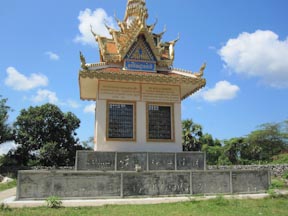 . Around its base, and around the base of the spire atop it, are reliefs that depict the suffering of the Cambodian people of this area – the forced evacuation of Battambang, the work collectives, the labor battalions, the tortures and rapes, the executions, and the reported acts of cannibalism by those that ran the prison. Midway up the spire, skulls of the dead look out through a glass case. The monument is located on ground that was the dumping site for these dead.
. Around its base, and around the base of the spire atop it, are reliefs that depict the suffering of the Cambodian people of this area – the forced evacuation of Battambang, the work collectives, the labor battalions, the tortures and rapes, the executions, and the reported acts of cannibalism by those that ran the prison. Midway up the spire, skulls of the dead look out through a glass case. The monument is located on ground that was the dumping site for these dead.
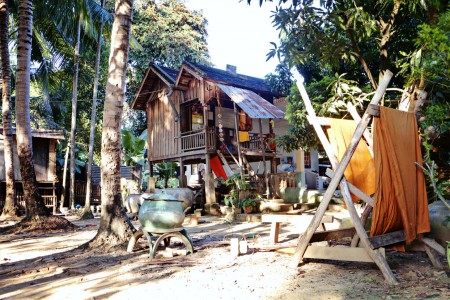 After walking around the complex and seeing the remnants of the atrocities committed here, we sat on a bench under a shade cover. We sat just outside a building once used by the Khmer Rouge as the men’s prison. Young monks now live inside its walls, their recently-washed saffron robes hanging outside to dry.
After walking around the complex and seeing the remnants of the atrocities committed here, we sat on a bench under a shade cover. We sat just outside a building once used by the Khmer Rouge as the men’s prison. Young monks now live inside its walls, their recently-washed saffron robes hanging outside to dry.
We drank a cold bottle of water as birds sang from the trees, and an occasional breeze cooled us. It was exceptionally pleasant; and I could imagine that, just a few years ago, the birds still sang and the breezes still came as people were murdered just a few meters from where we sat.
A striking thing about Wat Somrong Knong is that the evidence of the Khmer Rouge era is so subdued. There is the monument, and a sign that indicates the buildings that were used by the Khmer Rouge and the purpose for which they were used, but these are not things that particularly demand attention.
During an early-evening visit to the Wat, we saw the debris left from a recent party – food and drink packaging strewn across a lawn; a now-empty bandstand. Children played on the bandstand, while their parents wandered into the Wat from the surrounding homes. Chickens ran about, with some having been dyed green or pink or orange, perhaps as part of a celebration. An old man sat on a chair outside a temple building, microphone in hand, making announcements over the Wat’s public address system. My Khmer is at the kindergarten level, but I am pretty confident that his announcements included a list of food to be served at an upcoming event.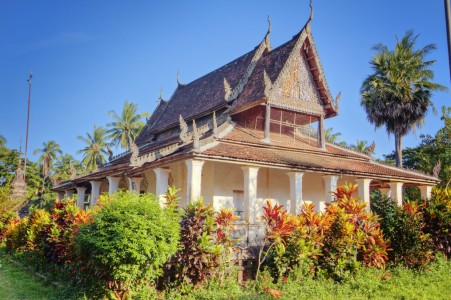
The initial impression of Wat Somrong Knong is that it’s just another monastery – the centerpiece of a small community; home to monks, living in a mish-mash of the old and new. If you didn’t know its history, and what to look for, it would be possible to visit the Wat and have nothing of its darker story revealed.
And, in this way, perhaps Wat Somrong Knong is a metaphor for Cambodia in general. A horror occurred here, but unless you know the story and what to look for, you may not notice. When it comes to the Khmer Rouge era, Cambodia is not wearing its heart on its sleeve. One has to seek evidence of the crime, because it is not going to be thrust in your face.
Maybe that is what is necessary to move past the tragedy.
The other day, we saw a Hummer H2 in Battambang. It was unique for two reasons: its expense (it costs more than most will earn in a lifetime in this country), and its Pialin license plates. You see, Pailin is an area that was given to the former Khmer Rouge leadership to govern just a few years back, and it’s located only about an hour-and-a-half drive away from Battambang. It’s now somewhat of a retirement haven for former Khmer Rouge.
At our Battambang hotel, the manager is a young man whose mother lost seven of eight siblings to the Khmer Rouge, as well as her father. Also at the hotel, the number-two staff member is the son of former Khmer Rouge soldiers, now living in the Pailin area.
That a Pailan-licensed Hummer can drive through Battambang without getting mobbed, that the sons of parents on both sides of the atrocity can work closely together, and that former victims from Battambang don’t take up arms and seek personal justice on their former tormenters, who live just a short drive down the road…
Well, that is something my American mind just does not yet fully understand.
Perhaps this is why the evidence of Khmer Rouge atrocities is not readily apparent. If it was, the Hummer may not have made it back to Pailin.
